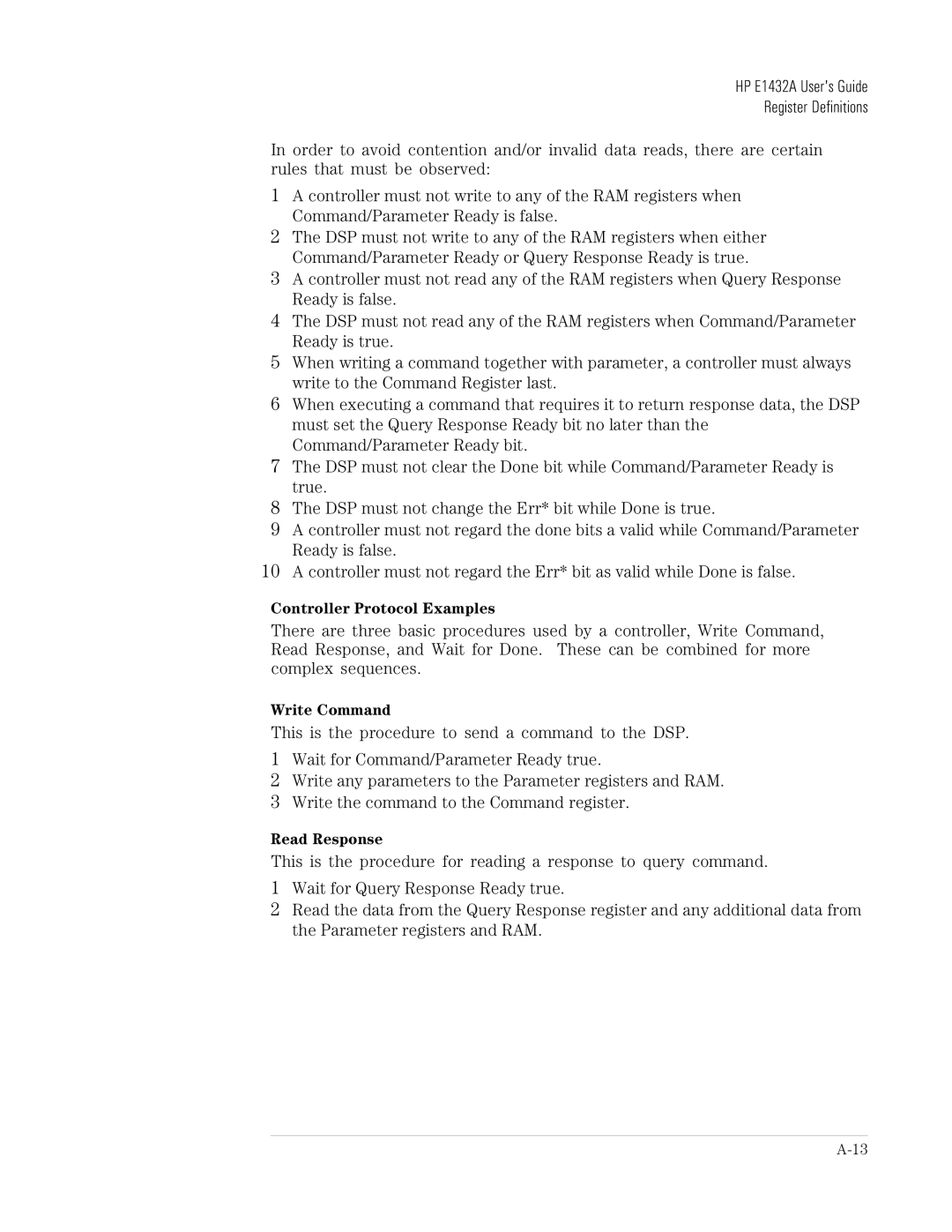HP E1432A User's Guide
Register Definitions
In order to avoid contention and/or invalid data reads, there are certain rules that must be observed:
1A controller must not write to any of the RAM registers when Command/Parameter Ready is false.
2The DSP must not write to any of the RAM registers when either Command/Parameter Ready or Query Response Ready is true.
3A controller must not read any of the RAM registers when Query Response Ready is false.
4The DSP must not read any of the RAM registers when Command/Parameter Ready is true.
5When writing a command together with parameter, a controller must always write to the Command Register last.
6When executing a command that requires it to return response data, the DSP must set the Query Response Ready bit no later than the Command/Parameter Ready bit.
7The DSP must not clear the Done bit while Command/Parameter Ready is true.
8The DSP must not change the Err* bit while Done is true.
9A controller must not regard the done bits a valid while Command/Parameter Ready is false.
10A controller must not regard the Err* bit as valid while Done is false.
Controller Protocol Examples
There are three basic procedures used by a controller, Write Command, Read Response, and Wait for Done. These can be combined for more complex sequences.
Write Command
This is the procedure to send a command to the DSP.
1Wait for Command/Parameter Ready true.
2Write any parameters to the Parameter registers and RAM.
3Write the command to the Command register.
Read Response
This is the procedure for reading a response to query command.
1Wait for Query Response Ready true.
2Read the data from the Query Response register and any additional data from the Parameter registers and RAM.
